On March 1, 1948, on the road from Saigon to Dalat in French Indochina, a French military convoy was ambushed by the Viet Minh. As soon as the first shots were fired, Lieutenant Colonel Gabriel Brunet de Sairigné, a popular French Foreign Legion officer, was fatally wounded. In him, the French Army lost one of the youngest commanding officers in its history; he had just turned 35. The following article was written in his memory.
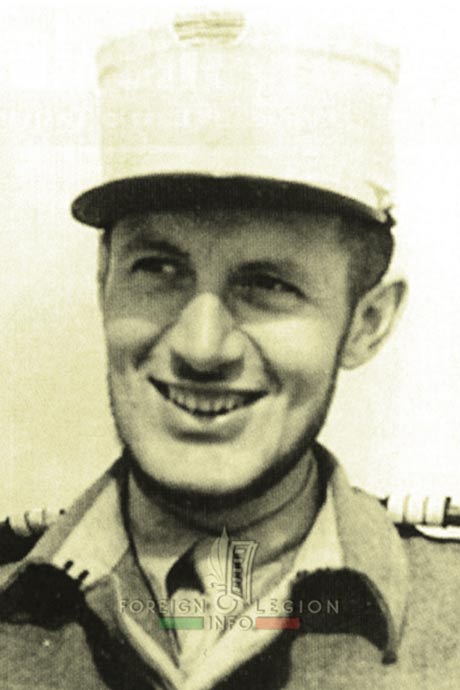
Early years
Gabriel Marie Paul Louis Brunet de Sairigné was born in Paris on February 9, 1913. A robust and active person, young Gabriel joined the Scout Movement, where he became troop leader. After finishing his studies, he decided to pursue a military career and entered, in 1932, the prestigious Saint-Cyr military academy. In late 1935, now Second Lieutenant Brunet de Sairigné, he graduated and was assigned as a platoon leader to the 29th Chasseurs Battalion (“Hunters”) in Gérardmer, Northeastern France.
In Gérardmer, the young officer practiced many sports, including skiing, climbing and mountaineering. His competence led him to be designated as an instructor for reserve officer cadets in Strasbourg, and in 1937, he was promoted to lieutenant.
In the meantime, Lieutenant Brunet de Sairigné requested to leave for Algeria, in French North Africa, to join the famous Foreign Legion. His request was granted in early 1939. Thus, in mid-April, he was assigned to an instruction company group of the DCRE and posted close to Algiers, the Algerian capital. Later that year, he was put in command of an instruction detachment in the South Oran region, on the edge of the Sahara.

Norwegian Campaign
At the same time, in late 1939, the Second World War broke out in Europe. In February 1940, it was decided that a battalion was to be formed in Algeria with its destination in Northern Europe. The young officer immediately applied as a volunteer and was accepted. With his new unit, he moved to France. There, along with another battalion formed in Morocco, they became the 13e DBMLE (the Legion’s provisional demi-brigade), a mountain warfare unit. Lieutenant Brunet de Sairigné was appointed a platoon leader within the 7th Company, 2nd Battalion. In late April, the demi-brigade was sent to Norway, as part of a French Expeditionary Force, to successfully face Germans at Bjerkvik and Narvik. The legionnaires carried out the first Allied battles won over German forces in WWII. During the campaign, Lieutenant de Sairigné showed his bravery and earned his first mention in dispatches.
In June, the 13th Demi-Brigade, which was distinguished from the rest of the Legion by their khaki wool berets, returned to France. However, due to the German advance and the fall of Paris, the men quickly reembarked for England. Here, with half of the 13e DBMLE, Gabriel Brunet de Sairigné joined General de Gaulle’s Free French Forces (FFL), part of the British Army, and formed the 14e DBMLE. Meanwhile, on June 22, the armistice was signed between France and Germany.
With the Free French Forces
The new demi-brigade left England for West and Equatorial Africa, where they would face French colonial troops in what were then the French colonies. First was an unsuccessful campaign in Senegal, then Cameroon, which voluntarily rallied to the Free French. Here, Lieutenant Brunet de Sairigné became part of the Staff of the FFL’s Middle East French Brigade, under Colonel Monclar, who had recently left the command of the 14th Demi-Brigade.
During the Eritrea campaign in Italian East Africa in early 1941, while fighting alongside the British forces, the two officers were the first to enter Massawa (Massaouah in French), where they accepted the surrender of five officers, 450 non-commissioned officers and nearly 10,000 Italian troops. This action earned Lieutenant de Sairigné his second mention in dispatches.
After the 1941 Syria-Lebanon Campaign, where the Free French once again encountered French troops, including legionnaires from the 6e REI, the demi-brigade (renamed the 13e DBLE in late 1940) was reorganized. Gabriel Brunet de Sairigné was promoted to captain in mid-July and took over a company of its 1st Battalion.
He then left for the campaign in Libya, where the British were preparing an offensive to push the Germans out of Africa. From May to June the 13e DBLE staged the heroic defense at Bir Hakeim, its battalions stopping the advance of General Rommel’s German Africa Corps and Italian troops. Captain Brunet de Sairigné participated; his anti-tank guns put 35 of the Italian Ariete division’s tanks out of action. On August 10, 1942, he was awarded the Order of Liberation from the hands of General de Gaulle, along with General Koenig and Lt. Colonel Amilakvari, head of the 13e DBLE; the latter fell a few weeks later, during the Battle of El Alamein.
In November 1942, Captain de Sairigné took command of the 1st Battalion, 13e DBLE. In 1943, he led this unit throughout the Tunisian campaign, the last one in Africa, and was promoted to major. In late April 1944, he and his men moved to Italia in Southern Europe. Until that June, they faced fierce battles with Germans at Radicofani and at Garigliano. Thereafter, they returned to Tunisia.
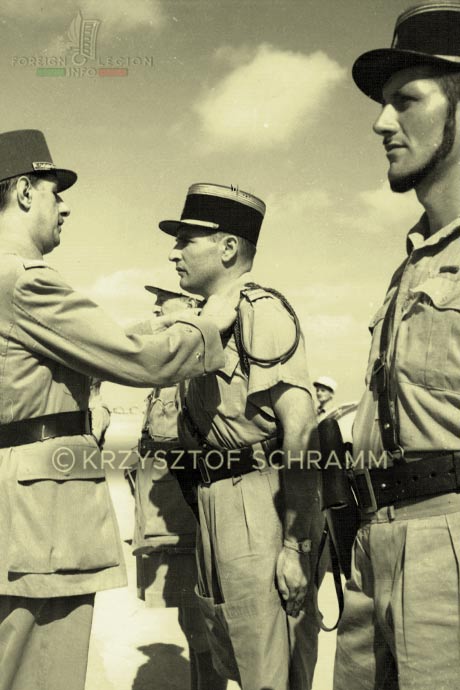

Liberation of France
In mid-August 1944, Major de Sairigné’s battalion, which still included 96 veterans of the Norwegian campaign, landed in France after four years of absence to take part in the liberation of the country. Other Foreign Legion units also participated, since French North Africa had already joined the Allies in late 1942, freeing their manpower for other ventures. In Autun (central-eastern France) in early September 1944, 3,200 Germans were captured by the 1st Battalion. The unit also saw hard fighting in Eastern France, including the battles at Grussenheim and Ilhaeusern. Major Brunet de Sairigné gained another two mentions in dispatches and was awarded the prestigious Legion of Honor order.
In late March 1945, he left the battalion and the demi-brigade, the latter having already been reintegrated into the Foreign Legion. Promoted to lieutenant-colonel, most likely the youngest in the history of the French Army, the 32-year old officer became the chief of the 1st Free French Division’s General Staff. The war in Europe ended six weeks later.
In early February 1946, Lieutenant Colonel Brunet de Sairigné married Marie-Charlotte de la Passadière.
French Indochina and death
A few months later, in mid-August 1946, the lieutenant colonel landed in French Indochina in Southeast Asia, where the 13e DBLE had already conducted operations against the Viet Minh insurgents. He took over the Demi-Brigade and became, at the age of 33, the youngest commanding officer of the then French Army. His unit was based north of Saigon, the capital of what is now Southern Vietnam. His wife accompanied him there, and in May 1947, their first daughter Guillemette was born.
Lieutenant Colonel Brunet de Sairigné led the 13th Demi-Brigade for eighteen months with all his prestige, all his drive, and all his chivalrous grandeur. Present at every important operation, he was literally adored by his legionnaires, who considered him a kind of supernatural being: despite his very tall stature (always a head taller than the others) and the countless dangers he had been through in the last eight years, he had never been wounded, not even a scratch. His bravery, peaceful and cheerful nature, and his calmness, combined with an astonishing sense of humanity, imposed themselves on everyone.
On March 1, 1948, a few months before his prescribed return to France, he joined a long military convoy of seventy vehicles heading along the Dalat road from Saigon to the northeast of the capital. Twelve minutes past four o’clock in the afternoon, 70 miles (113 km) from Saigon, the convoy was attacked by the Viet Minh’s Regiment 10. Lieutenant Colonel Gabriel Brunet de Sairigné, unharmed throughout the numerous fierce battles of WWII and the military operations in Indochina, was fatally shot at the very beginning of the attack. He became the second commanding officer killed in the initial eight years of the 13e DBLE’s existence.
His body left Saigon on May 11, 1948 and was shipped to Oran, Algeria, where it landed on June 13. There the Legion’s Music Band and Colonel Gaultier, then the head of the Legion, paid tribute to the deceased officer. Then the body left Oran for Marseille in France, where it arrived on June 18. Lieutenant Colonel de Sairigné’s whole family was there, including his father and his pregnant wife. Catherine, their younger daughter, was born a few weeks later. She and her sister Guillemette became goddaughters of the Foreign Legion.
On April 28, 1948, the main headquarters of the Foreign Legion training units in Saida, Algeria, was renamed after the popular lieutenant colonel. Later, several Legion posts were also given his name. In October 2002, a memorial dedicated to him was unveiled in Moutiers-les-Mauxfaits, Western France.
Lieutenant Colonel Gabriel Brunet de Sairigné earned eleven mentions in dispatches. For his admirable service he was awarded, among other accolades, the Order of Liberation, the War Cross 1939-1945, the Foreign Theater Operations War Cross, the Royal Norwegian Order of Saint Olav, and the Commander of the Légion d’honneur (Legion of Honor).
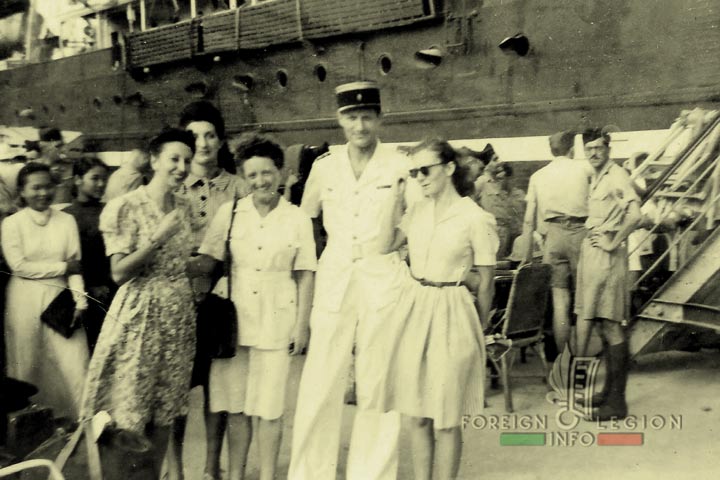
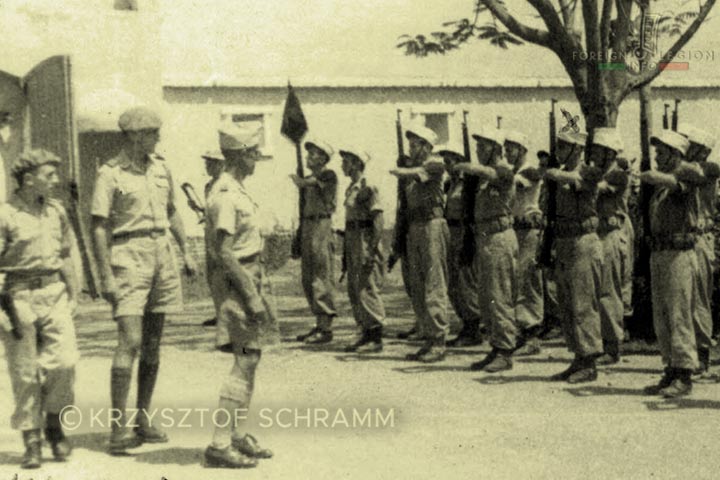
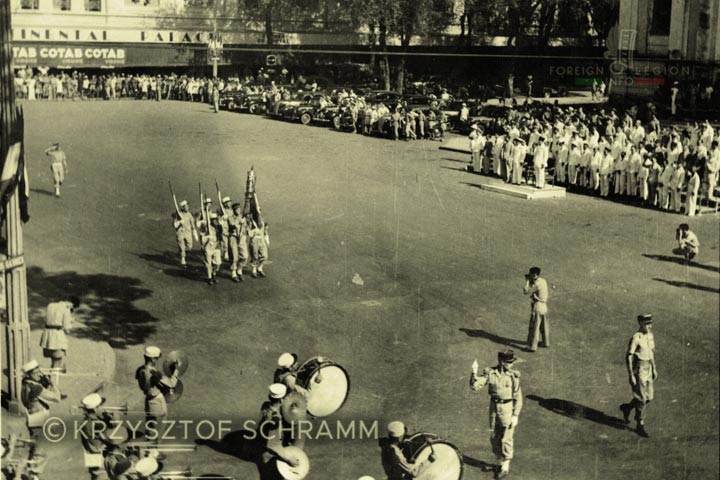

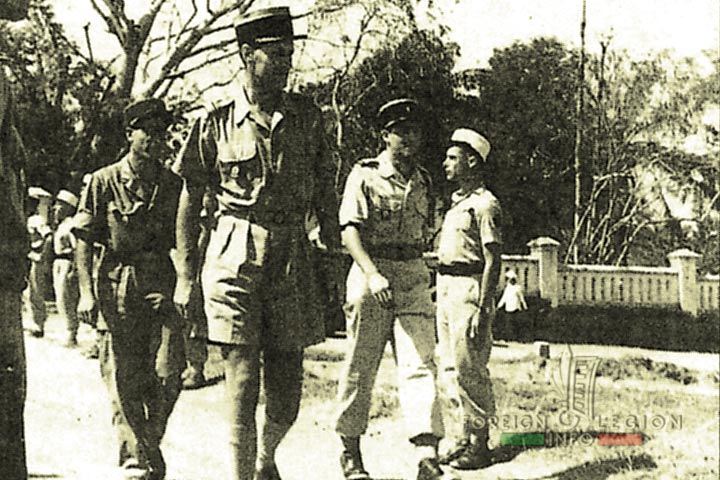
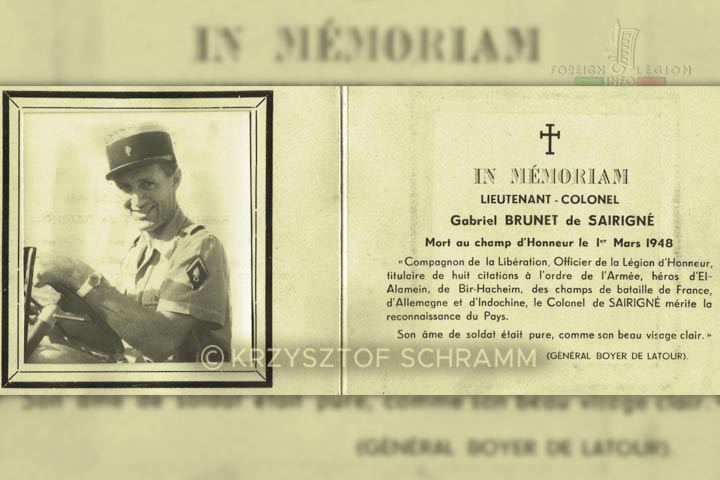
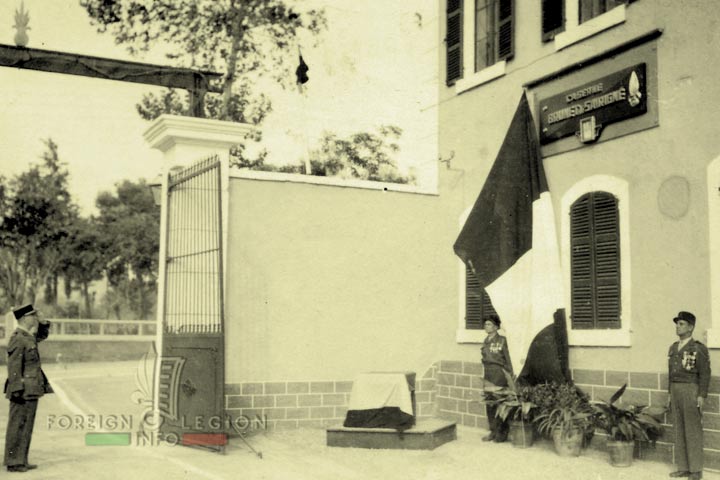

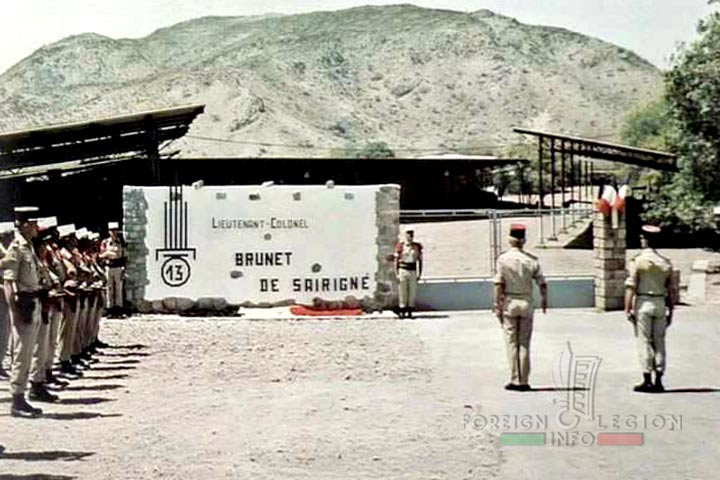

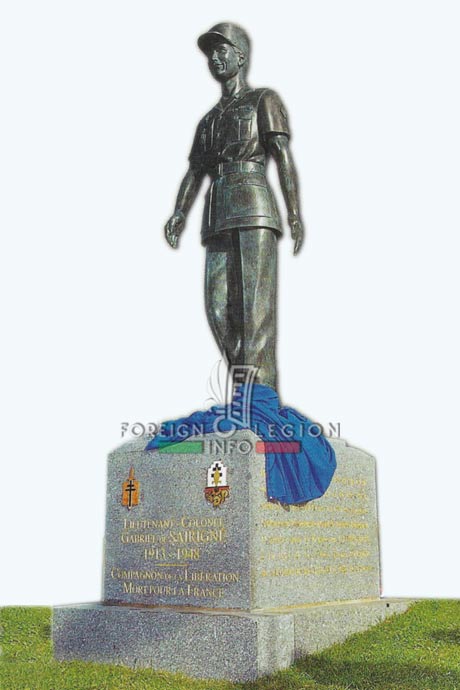
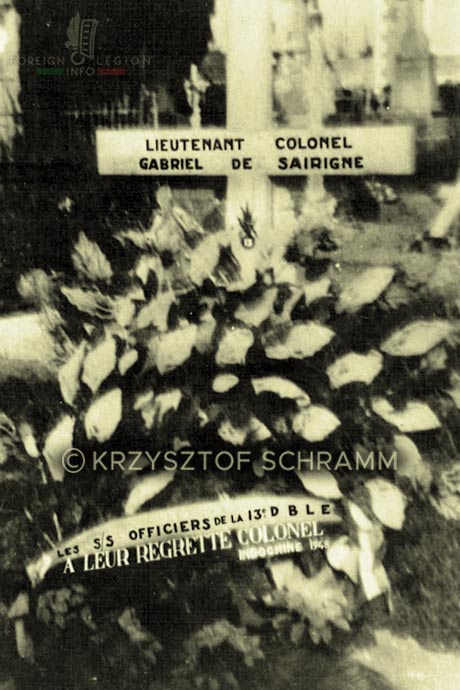

—
Related posts:
General Paul-Frédéric Rollet
General Vittorio Tresti passed away
Raphaël Vienot
Lieutenant Colonel Jean Pierre Bissey
Lieutenant Colonel Dimitri Amilakvari
Lieutenant Colonel Pierre Jeanpierre
Lieutenant Colonel Brochet de Vaugrigneuse
Lt Colonel Zlatko Sabljic passed away
Major Raymond Cabaribère (1913 – 1954)
